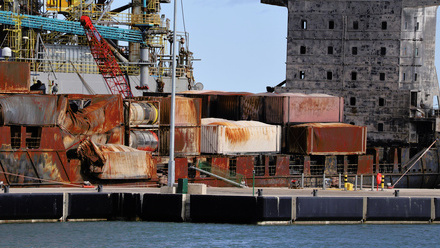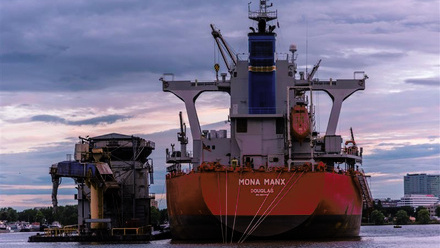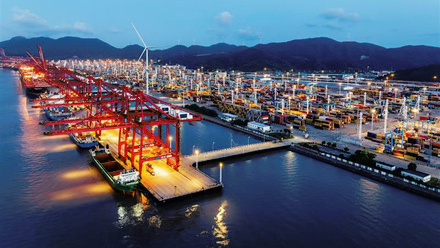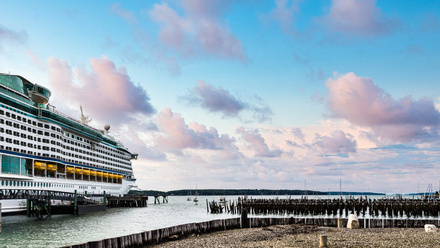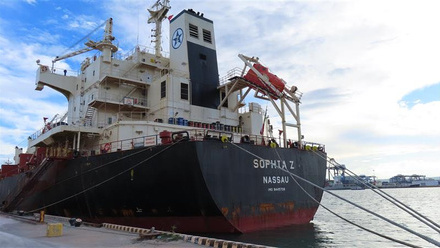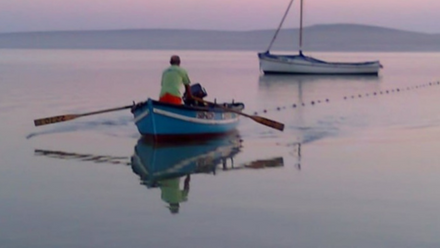Ali Ka accident: exhaustion once again to blame
The chemical tanker’s allision with a fuel jetty represents another incident due, in part, to poor fatigue management.
Even though fatigue can drain even the most highly trained and competent personnel to the point where mistakes become inevitable, the maritime industry still tends to treat it as a personal problem. Audiences at the recent IMarEST Annual Conference heard Simon Graves, Marine Accident Investigation Branch (MAIB) Principal Inspector of Accidents, say that the maritime industry was “not learning from the accidents in the past” in terms of fatigue.
In the modern world, it is rare to see an individual entrusted with such an enormous responsibility as that of a ship and its crew. Onboard, even crew rotations take this into account. But for a marine pilot, the job is characterised by sole responsibility. And when fatigue becomes part of this equation, it can lead to disaster.
What happened in October 2022?
At 3:40am on Monday 25 October, Pilot A was assigned to Malta-flagged tanker Ali Ka, with a cargo of hydrogenated vegetable oil (HVO) aboard. The vessel was generally in good working order, with one exception – it had astern propulsion that was, as described by the ship’s master and later noted by the MAIB report “lazy and very, very slow”, as well as being miscalibrated (‘-12’ on the throttle was actually zero).
Docked at Oikos 1, a jetty at the Canvey Island Oikos terminal, and facing west, the vessel’s objective would be to kick out to starboard, before progressing downriver to travel onward to Eastham, Merseyside, in a three-point turn manoeuvre similar to reversing a car out of a driveway.
But the move would be a deft one, as it would require a burst of sternward propulsion accompanied by starboard yaw from the vessel’s bow thrusters. An additional dimension was added by the Thames’ tidal stream, which the vessel would be backing into as part of its manoeuvre, and a nearby shoal, which had to be avoided by the vessel’s stern as it kicked out.
To expand the earlier illustrative example, then, the operation would be something like reversing down a slip road before performing a three-point-turn onto a busy highway. For such an operation to take place, a tug would normally be provided to give the ship the lateral nudge it would need to stay on course.
However, there was no tug available, as all of them were accompanying the US-Flagged Delaware Express. Tug VB Panther could be guaranteed at 5am, but this was an hour later than Ali Ka was due to depart, and the tide was going out. Under pressure to get the vessel out before passage on the river was rendered impossible, Pilot A made the decision to attempt the manoeuvre without one – a decision that would turn out to be calamitous.
As the vessel left the dock at 4:23am, the forward spring line snagged, and the vessel’s stern swung out to 90°, into the river current. Two minutes later, the line was freed, and the vessel began to drift in the current, toward the second berth Oikos 2. Scrambling for purchase, Pilot A called for forward thrust as an alarm sounded from the vessel’s overloaded port bow thruster fighting to keep the ship on course.
In a last-ditch effort to get the bow pointed downriver, Pilot A then called for full ahead power and full starboard rudder. But by then it was too late. Ali Ka’s stern first careered into Oikos 2’s westernmost dolphin and smashed the walkway beside it. By the time both anchors were down, and the ship had come to rest, its bow had been metres away from smashing clean through the jetty.
The outcome: tiredness cited
For a pilot of some 17 years of experience, and decades of seafaring experience on much larger vessels before that, the Ali Ka passage would have been regarded as a matter of routine, but they were uncomfortable with the notion of waiting for the tide to go out further before departure. If Ali Ka had waited until 5am and departed with tug assistance, it might have been a grounding detailed in the MAIB report, instead of an allision with a dolphin – perhaps, one that could have made for grimmer reading should circumstances have altered slightly. The mistake had been for the vessel to depart at all, but time and commercial pressures prevailed.
MAIB details numerous factors which may have compromised Pilot A’s judgement, one of them being fatigue. In his sixties, Pilot A was in poor health, with an injury causing sleeping trouble. Pilot A was also deemed to be overworking, performing 6.4 acts of pilotage per 9-day duty period, compared with an accepted Port of London Authority (PLA) standard of 4-5.
“Pilot A’s sleep/wake history made it highly likely that he was experiencing an elevated level of fatigue at the time of the accident [and] demonstrated behaviours and performance consistent with a fatigued individual,” MAIB found.
MAIB concluded that better organisational requirements are needed to address fatigue: “Fatigue can also arise as a result of cumulative early starts or late finishes that were not accounted for in this policy. The lack of a requirement to submit a fatigue or safety report following a pilot reporting fatigue also limited organisational learning and a systematic improvement in the management of fatigue.”
Join IMarEST’s Human Element Special Interest Group to help improve safety and operational efficiency in the industry.
Newsletter image: Tanker ship captain; image: Shutterstock
Image: oil tanker unloading fuel at the Oikos Terminal, Canvey Island; credit: Shutterstock
Tell us what you think about this article by joining the discussion on IMarEST Connect.

